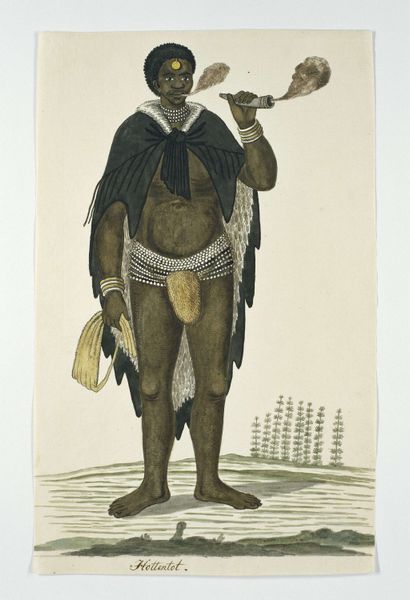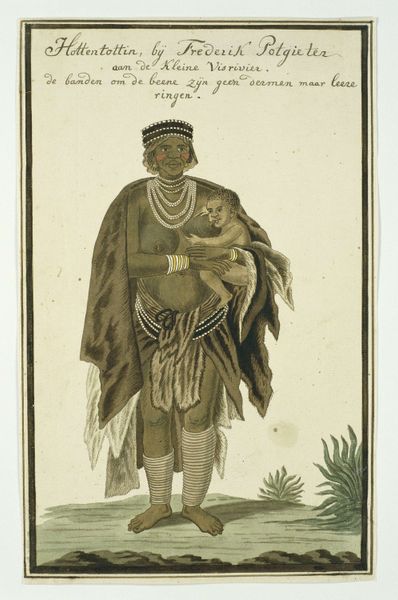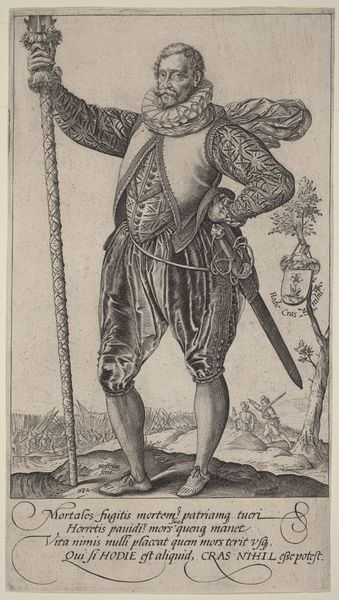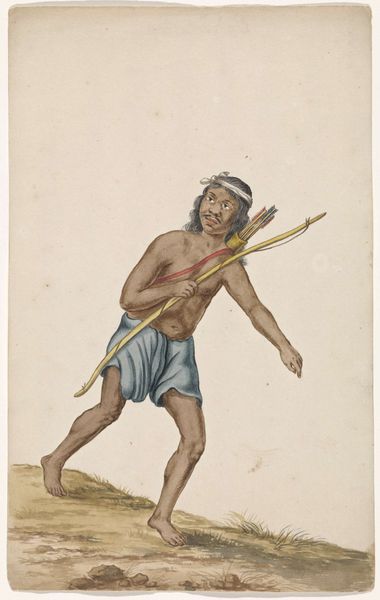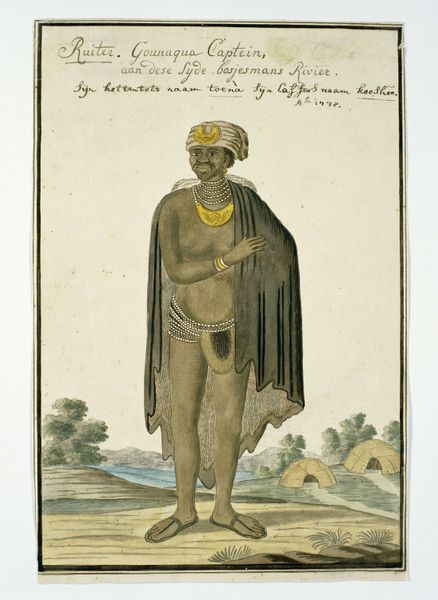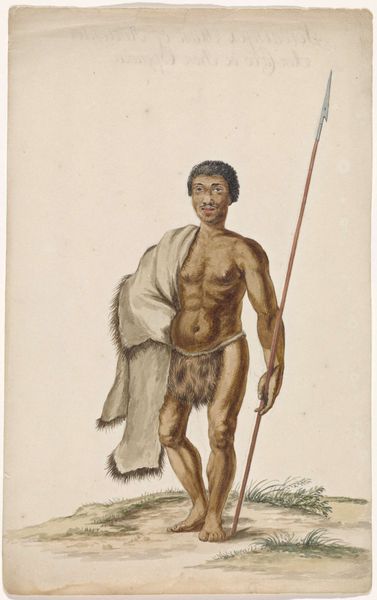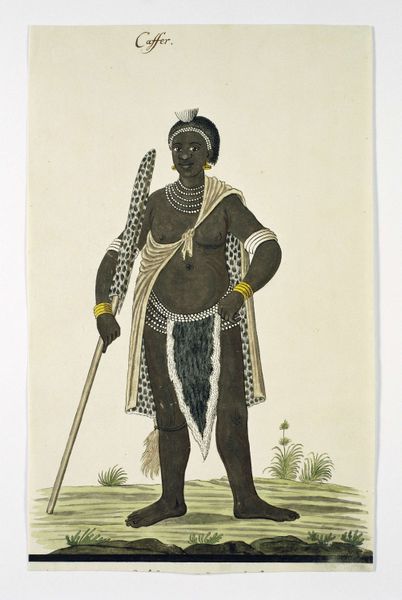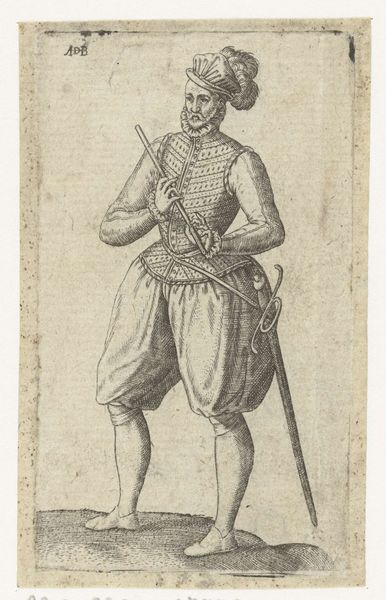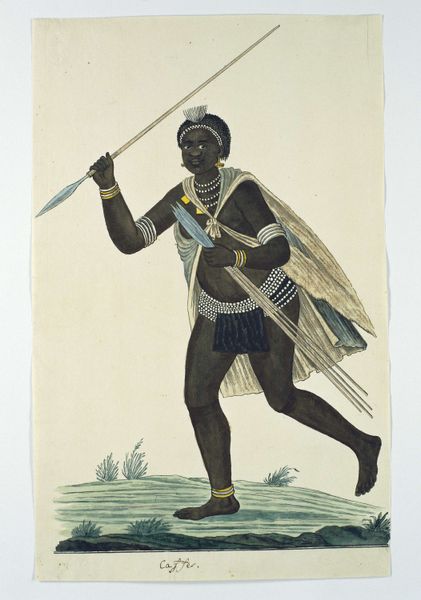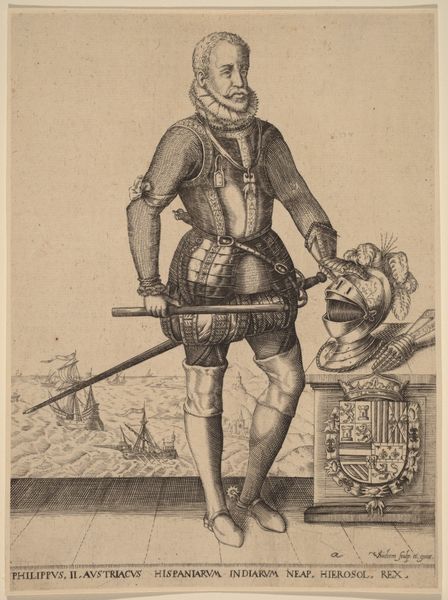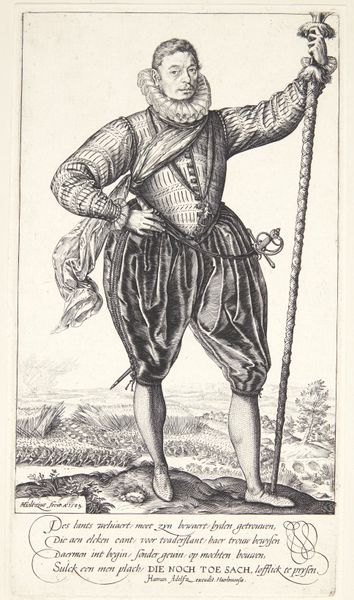
print, watercolor
#
portrait
#
african-art
# print
#
caricature
#
caricature
#
watercolor
#
watercolour illustration
#
history-painting
#
watercolor
Dimensions: height 660 mm, width 480 mm, height 317 mm, width 202 mm, height 306 mm, width 187 mm
Copyright: Rijks Museum: Open Domain
Curator: This is "Karmoeb, Captain of the Namaqua Khoisan," a watercolor print attributed to Robert Jacob Gordon, created sometime between 1777 and 1786. Editor: Immediately striking is the figure's confident pose, a rather powerful presence rendered in delicate watercolour. It makes for an interesting contrast. Curator: Indeed. Gordon, a military man and explorer in the service of the Dutch East India Company, offers us what he presents as an ethnographic record. This work, along with others, reflects the Company's need to classify and document the peoples and resources of the Cape Colony. Editor: I find the emphasis on material culture particularly compelling. The meticulously rendered jewelry, the pipe, the weaponry displayed behind him – it all speaks to status, and the means by which that status is both created and perceived. Consider the act of portraiture itself – who commissioned it, for what purpose? It immediately implicates the social dynamic at play. Curator: The term "Hottentot," used in the inscription, now considered derogatory, underscores the colonial lens through which Gordon viewed Karmoeb. It’s a stark reminder of the power imbalances inherent in these visual representations. The visual details, like his sandals or cape trimmed with fur, contribute to what the European audience would’ve perceived as an exotic leader. Editor: Exactly, look at that pipe he is holding and the way he's smoking, the expression, the posture, even that sort of loincloth made from what appears to be beads or shells; you can easily imagine how these would be consumed as images of "the other". These objects, readily transported through trade or plunder, carry social narratives with them that further reinforce the established colonial narrative. Curator: Ultimately, this print functions as a historical document that needs to be approached with criticality. While appearing objective, it undeniably carries the biases and power dynamics of its time. Editor: It compels us to examine the relationships between observer and observed. How does this portrait function as an object of consumption and what power dynamics are present, both then and now?
Comments
No comments
Be the first to comment and join the conversation on the ultimate creative platform.
